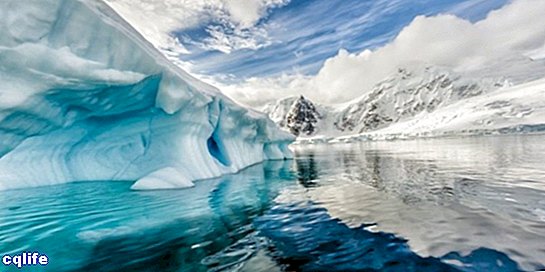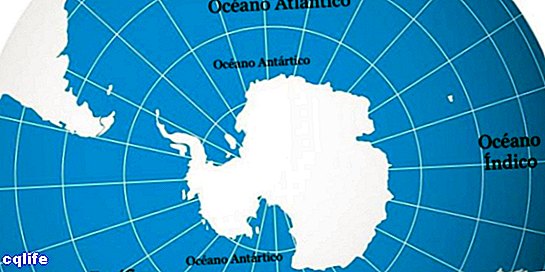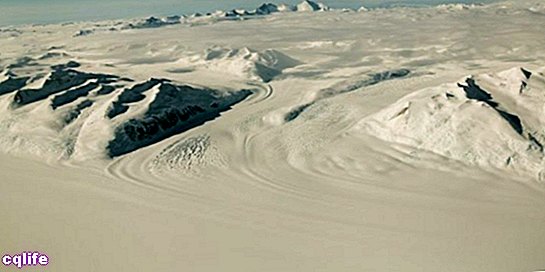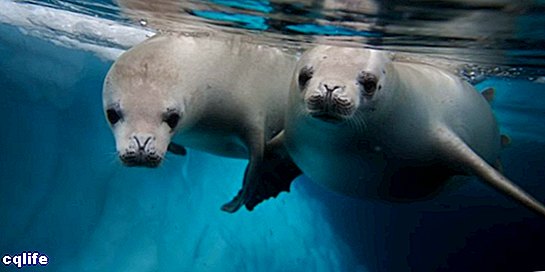- What is Antarctica?
- Characteristics of Antarctica
- Antarctica location
- Climate of Antarctica
- Relief of Antarctica
- Fauna of Antarctica
- Countries based in Antarctica
We explain everything about Antarctica, its climate, relief, fauna and other characteristics. Also, countries based in Antarctica.

What is Antarctica?
Antarctica (or Antarctica in some countries) is the fourth continent largest in the world and the southernmost (south) of all. In fact, towards the center of your territory the south pole of the planet Earth. Its territory is almost entirely (98%) covered with ice that reaches 1.9 km thick.
Since we are talking about the coldest, driest and windiest place on the planet, the life Ordinary in Antarctica is almost impossible, so it has no population native. It is only inhabited by the different missions of scientific observation that have bases in their territory (around 1000 to 5000 people throughout the year), generally located on the plateau Antarctica.
Furthermore, it is the most recently discovered continent of all. It was first observed by the Spanish navigator Gabriel de Castilla (c. 1577- c. 1620) during the summer Austral of 1603. It was only explored at the end of the 19th century, when the first Norwegian team landed on its shores in 1895.
Its name, on the other hand, does come from classical antiquity: it was used for the first time by the Greek philosopher Aristotle (384-322 BC) around the year 350 BC. C. in his book Meteorology, to name those regions "opposite to the north" (hence its name, from the Greek antarktikós, "Opposite to the arctic").
Characteristics of Antarctica
Antarctica is characterized by the following:
- The surface of the continent is greater than that of Oceania or Europe, being the fourth largest continent in the world, with a total area of 14,000,000 square kilometers, of which only 280,000 are ice-free during the summer and 17,968 are coastal .
- Its territory comprises a large group of islands, the largest being Alexander I Island (49,070 km2), Berkner Island (43,873 km2), Thurston Island (15,700 km2) and Carney Island (8,500 km2).
- There is no indigenous human population in Antarctica, nor countries, nor territorial divisions, although seven different countries have territorial claims on it: New Zealand, Australia, France, Norway, United Kingdom, Argentina and Chile.
- The Antarctic territory is governed by the Antarctic Treaty, in force since 1961, and which prevents the military presence of any kind, mineral extraction, the detonation of atomic bombs and the disposal of radioactive material, as well as other measures to support the scientific investigation and protection of the ecozone.
- It has numerous subglacial freshwater deposits, such as the Onyx (32 km long) or Lake Vostok (14,000 km2 of surface). Furthermore, the region contains 90% of the planet's ice and, contained there, 70% of the world's fresh water.
Antarctica location

Antarctica is located in the southernmost region of the planet, around the geographic south pole and within the Antarctic polar circle, below the Antarctic Convergence, that is, below 55 and 58 ° of latitude south. It is surrounded by the Antarctic Ocean, neighboring oceans Pacific and South Atlantic, and also the Indian Ocean, and is separated from the southern tip of the South America (the Argentine island of Ushuaia) for just 1,000 km.
Climate of Antarctica

Antarctica has the weather coldest of all continents. His temperature The lowest historical temperature is also the lowest temperature recorded on the entire planet (-89.2 ° C), and its eastern region is considerably colder than the western one, given that it is higher up.
Its annual minimum temperatures are usually around -80 ° C in winter and in the interior of the continent, while its annual maximums are close to 0 ° C in summer and on the coasts.
In addition, it is the driest place on the planet, where liquid water is scarce. In its region internal wet winds are rare, so it is dry as a desert frozen, while in its coastal region these winds are abundant and intense, which favors the fall of snow.
Relief of Antarctica
The geological history of Antarctica began about 25 million years ago, with the gradual breakdown of the supercontinent of Gondwana. During some stages of its early life it experienced a more northerly location and a tropical or temperate climate, before the Pleistocene Ice Age that covered the continent and wiped out its flora and fauna.
The western region of the continent resembles the Andes Mountains geologically, but it is the lower and coastal regions, where a certain life is possible. In contrast, the eastern region is at a higher altitude, presenting a polar plateau in its central region, known as the Antarctic plateau or the geographic south pole.
This elevation extends for more than 1000 km to the east, and has an average of 3,000 meters above sea level. Its highest point is Dome A, which reaches 4,093 meters above sea level.
Fauna of Antarctica

The fauna in Antarctica is scarce, especially in what vertebrates Terrestrial refers, since they prefer the subantarctic islands, with a less hostile climate. On the continent it is possible to find life invertebratesuch as tardigrades, lice, nematodes, krill, and various microorganisms.
The major sources of life in the region are found in the lowlands and coastal areas, and consist of aquatic life: blue whales, orcas, squid or pinnipeds (such as seals or sea lions). There are also various species of penguins, among which the emperor penguin, the king penguin, and the rockhopper penguin stand out.
Countries based in Antarctica
Most of the signatory countries of the Antarctic Treaty have scientific research bases on the continent. Some are permanent, with staff in rotation, and others are seasonal or summer, when temperatures and weather are less cruel. The number of bases may vary depending on the year, reaching 40 bases in 20 different countries (in 2014).
Most of the summer bases belong to Germany, Australia, Brazil, Chile, China, South Korea, USA, France, India, Japan, Norway, New Zealand, UK, Russia, Poland, South Africa, Ukraine, Uruguay , Bulgaria, Spain, Ecuador, Finland, Sweden, Pakistan, Peru. And during the harsh winter, winter bases from Germany, Argentina and Chile remain in Antarctica.
